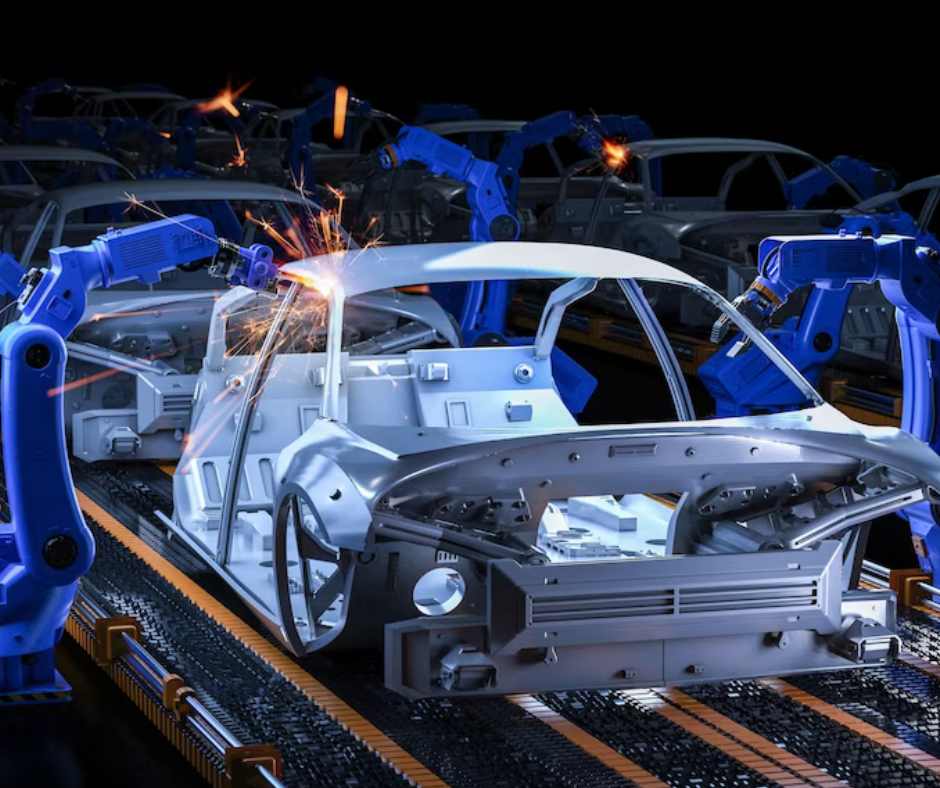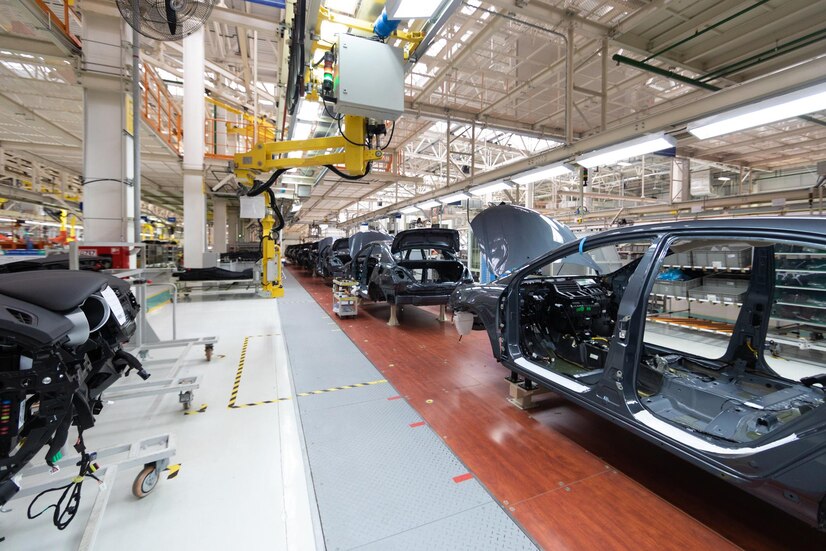The automobile industry has been witnessing a remarkable transformation driven by technological innovations. From electric vehicles to autonomous driving and advanced connectivity, these advancements are reshaping how we think about transportation. In this article, we’ll explore the various technological innovations revolutionizing the automobile industry.
Evolution of Automobile Technology
The journey of automobile technology began with early innovations that paved the way for the vehicles we know today. The industry has come a long way from the invention of the first gasoline-powered automobile to the mass production techniques introduced by Henry Ford. However, one of the most significant shifts in recent times is the move towards electric vehicles (EVs).
Sustainable Propulsion Technologies

Rise of Electric Vehicles (EVs)
Electric vehicles have gained immense popularity due to their environmental benefits and reduced dependence on fossil fuels. Battery technology advancements have improved range and charging times, making EVs a practical choice for consumers. Additionally, the development of charging infrastructure is addressing a range anxiety concerns and promoting wider EV adoption.
Hydrogen Fuel Cell Vehicles
Hydrogen fuel cell vehicles offer another sustainable propulsion solution. These vehicles use hydrogen gas to generate electricity, emitting only water vapor as a byproduct. Understanding how fuel cells work and addressing the challenges associated with hydrogen storage and distribution are crucial steps toward making this technology more accessible.
Autonomous Driving
Autonomous driving technology is revolutionizing the concept of transportation. Different levels of automation, from driver assistance to fully self-driving cars, are being explored. Sensors, perception technology, and AI and machine learning algorithms enable vehicles to perceive their surroundings and make real-time decisions, enhancing road safety and convenience.
Connectivity and IoT Integration
Vehicle connectivity is changing the way we interact with our cars. From real-time traffic updates to remote diagnostics, the importance of seamless connectivity cannot be overstated. Vehicle-to-vehicle (V2V) and vehicle-to-infrastructure (V2I) communication enhance road safety and enable cooperative driving scenarios.
Advanced Driver Assistance Systems (ADAS)
ADAS technologies are making driving safer and more comfortable. Collision avoidance systems, lane departure warnings, and adaptive cruise control are examples. These systems use sensors and cameras to monitor the vehicle’s surroundings and assist the driver in avoiding potential hazards.
Augmented Reality (AR) and Heads-Up Displays (HUDs)
Augmented reality and heads-up displays enhance the driving experience by providing vital information without causing distractions. AR navigation systems overlay directions in the real world, while HUDs project critical information onto the windshield, allowing drivers to keep their eyes on the road.
Innovative Materials and Manufacturing Processes
Lightweight materials are incorporated into vehicle design to improve efficiency and reduce fuel consumption. Additionally, 3D printing is revolutionizing the manufacturing process by enabling the production of complex components with precision and speed.
Energy Efficiency and Sustainability
Regenerative braking systems capture and store energy during braking, improving overall energy efficiency. Eco-friendly interior materials are also used to create a more sustainable and comfortable driving environment.
User Experience (UX) Enhancements
Infotainment systems and user interfaces are becoming more intuitive and user-friendly. Voice recognition and natural language processing allow drivers to interact with their vehicles more naturally and hands-free.
Cybersecurity in Vehicles
As vehicles become more connected, cybersecurity is a growing concern. Preventing vehicle hacking and ensuring data privacy is critical for maintaining the safety of both drivers and passengers.
Subscription-Based Services
Car sharing and subscription models are changing how people access and use vehicles. These models offer flexibility and cost savings while reducing the number of vehicles on the road.
Mobility as a Service (MaaS)
Mobility as a Service aims to integrate various transportation modes into a unified platform. Apps and digital platforms play a significant role in providing users with seamless and convenient mobility options.
Environmental Impact and Emissions Reduction
Government regulations and emission standards are driving innovation in emissions reduction technologies. Innovations such as catalytic converters and exhaust after-treatment systems are helping vehicles become cleaner and more environmentally friendly.

Design and Aerodynamics
Streamlined design and aerodynamics are crucial for improving vehicle efficiency and reducing drag. Wind tunnel testing is used to optimize vehicle designs for better fuel economy.
Smart Manufacturing and Industry 4.0
Automation and the Internet of Things (IoT) are transforming manufacturing. Smart factories leverage data analytics to optimize production and improve quality control.
Advanced Lighting Systems
LED and laser headlights offer improved visibility and energy efficiency. Adaptive lighting systems adjust to road conditions and enhance safety.
Biometrics and Personalization
Biometrics are being integrated into vehicles for secure access and ignition. Customizable in-car settings provide a personalized driving experience.
Future of Mobility
The future of mobility holds exciting possibilities, including flying cars, urban air mobility, and high-speed transportation systems like the Hyperloop. These innovations could reshape how we move within and between cities.
Challenges in Implementing Innovations
Implementing these innovations has challenges, including regulatory hurdles, safety concerns, and infrastructure limitations. Addressing these issues is essential for the successful integration of new technologies.
Collaboration and Partnerships
Collaboration between automakers and tech companies is driving innovation. Cross-industry collaborations bring together expertise from different sectors to create transformative solutions.
Investment in Research and Development
Key players in the automotive industry invest heavily in research and development to drive technological advancements. Allocating budgets for R&D ensures that new ideas are explored and developed.
Impact on Job Market
Technological innovations are reshaping the job market in the automotive industry. New technology, data analysis, and AI roles are emerging, creating opportunities for skilled professionals.
Consumer Adoption and Acceptance
Educating consumers about new technologies is crucial for their adoption. Cost, convenience, and familiarity influence how quickly these innovations are embraced.

Ethical Considerations
Autonomous vehicles bring ethical considerations to the forefront. Decisions made by self-driving cars in critical situations raise questions about how machines should prioritize human safety.
Case Studies of Successful Innovations
Tesla’s impact on the electric vehicle market and Waymo’s progress in self-driving technology are noteworthy case studies of successful innovations driving industry transformation.
Future Trends and Predictions
Electric vehicles are expected to continue their growth trajectory, and AI integration will become more prevalent in-vehicle systems, enhancing both safety and convenience.
Role of Government and Policy
Government incentives for green technologies and establishing a framework for autonomous vehicle testing play a pivotal role in shaping the future of the automotive industry.
The Role of Consumer Feedback
User experience and feedback play a significant role in refining and iterating technological innovations. Incorporating user input ensures that products align with consumer needs.
In conclusion, the automobile industry is undergoing a technological revolution that spans various domains. From electric propulsion to autonomous driving and connectivity, these innovations are shaping a future of safer, more efficient, and more sustainable transportation.
FAQs
- Are electric vehicles better for the environment?
Yes, electric vehicles produce fewer emissions than traditional internal combustion engines, making them better for the environment.
- How do autonomous vehicles navigate complex city environments?
Autonomous vehicles use a combination of sensors, cameras, lidar, and advanced algorithms to perceive and navigate complex urban environments.
- What is the significance of 3D printing in automotive manufacturing?
3D printing allows complex and lightweight components to be produced, reducing material waste and enabling faster prototyping.
- Will flying cars become a reality soon?
Flying cars are still in the experimental stages, but significant progress is being made towards developing viable urban air mobility solutions.
- How can consumers provide feedback on new automotive technologies?
Automotive manufacturers often solicit feedback through surveys, user testing, and online platforms to gather insights for improvement.





